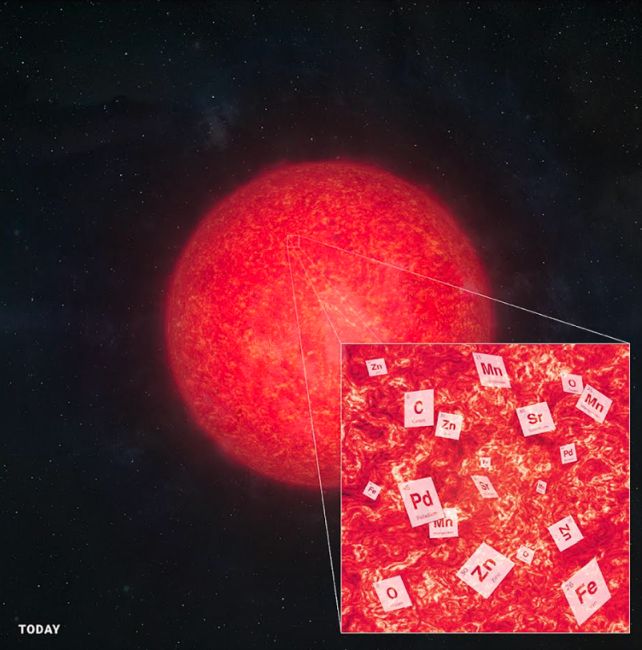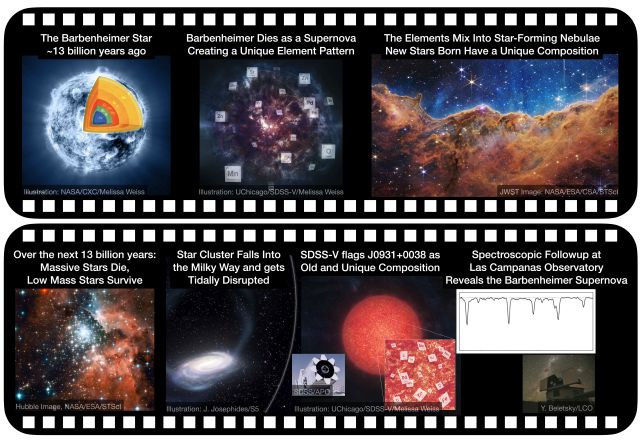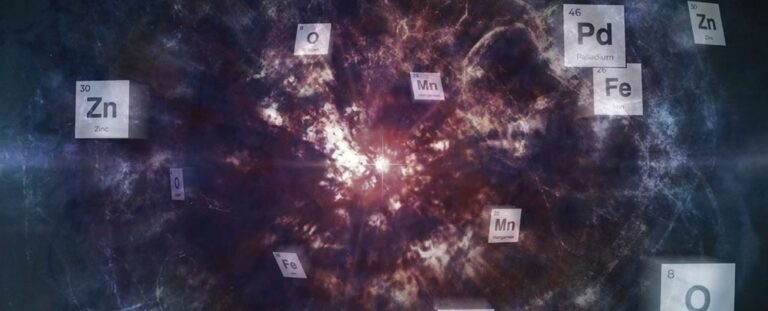Ancient Massive Star Underwent an Unexpected Explosion Method
A peculiar celestial object within the Milky Way exhibits the unmistakable characteristics of a rare explosion from a colossal star that existed billions of years ago during the cosmic dawn. The chemical composition of this enigmatic star, designated as J0931+0038, is so peculiar that it can only be attributed to the remnants of a massive star, at least 50 times the mass of our Sun, which generated the elements prior to its supernova event.

What makes this discovery even more perplexing is that a star of such immense magnitude should have directly collapsed into a black hole upon its demise, bypassing the supernova phase and not yielding the unusual abundance of elements observed in this case.
Astronomer Alex Ji from the University of Chicago and Sloan Digital Sky Survey (SDSS), who spearheaded the research, expresses astonishment, stating, “We have never encountered anything of this nature before. Whatever transpired during that era must have been truly extraordinary. We have affectionately dubbed the progenitor of the supernova as the ‘Barbenheimer Star’ due to its remarkable nucleosynthesis.”
The creation of most elements in the vast expanse of the Universe is primarily attributed to stars. Following the Big Bang approximately 13.8 billion years ago, when conditions cooled sufficiently for atoms to form, space was filled with a primordial mixture primarily composed of hydrogen, along with a small quantity of helium. It is from this elemental concoction that the first stars were born.
However, stars function as factories for elements, employing various distinct mechanisms to generate new materials through a process known as nucleosynthesis. These celestial bodies derive their energy from the fusion reactions occurring within their cores, where atoms are fused together to form heavier elements.
Nevertheless, this fusion process ceases at iron, as the energy required to fuse iron into heavier elements surpasses the energy produced, resulting in the star’s demise.

When the star undergoes a supernova explosion, it creates heavier elements in an extremely energetic environment. These elements, along with the fusion products, are expelled into space and eventually become part of subsequent generations of stars.
Studying the chemical abundances in stars provides valuable insights into their own history. For example, stars that have formed more recently tend to have higher concentrations of elements heavier than helium. This information can be used as a useful tool to determine the age of a star. Additionally, the presence of different elements can reveal details about the stars that existed before, particularly those in which the heavier elements were originally formed.
J0931+0038 is a red giant star with a low mass. It resides within the galactic halo, a roughly spherical region encompassing the disk of the Milky Way. The galactic halo is known to harbor numerous ancient and peculiar stars, making it a prime location for astronomers to search for clues about the early Universe.
The SDSS first observed J0931+0038 in 1999, but only in black and white. It wasn’t until 2019 that a subsequent observation captured the star’s full spectrum of light, which is crucial for determining its chemical composition. Different elements have distinct absorption and emission patterns at specific wavelengths, allowing scientists to identify the elements present.
The spectrum of J0931+0038 unveiled an extraordinary chemical composition unlike anything seen before. It exhibited remarkably low levels of elements with odd atomic numbers, such as sodium and aluminium, while being enriched in elements near iron, like nickel and zinc. Furthermore, the abundances of elements heavier than iron, such as strontium and palladium, were significantly higher than expected.

Astronomer Jennifer Johnson from the Ohio State University states that while we have observed individual features before, it is unprecedented to witness all of them in a single star. The research team has determined that the majority of the metals present in J0931+0038 must have originated from a solitary, highly metal-poor nucleosynthetic source. This source is believed to be a star with a mass 50 to 80 times that of the Sun, which exploded, scattering its contents into space and leaving behind a cloud of material from which J0931+0038 formed.
However, the fact that such a massive star is expected to undergo gravitational collapse rather than explode outward poses a significant challenge. Astronomer Sanjana Curtis from the University of California, Berkeley, who co-led the research, explains that no existing model of element formation can account for the observed phenomena. It is not a matter of making minor adjustments; the entire pattern of elements appears to be contradictory in nature.
This puzzle remains unsolved for now. Only by discovering more similar anomalies and studying their formation processes will we gain insight into the life, demise, and enduring imprints of stars like ‘Barbenheimer’ that continue to perplex us even after countless eons.
The team’s research has been accepted into The Astrophysical Journal Letters, and is available on arXiv.
Do not forget to share your opinion with us to provide you with the best posts !





0 Comments